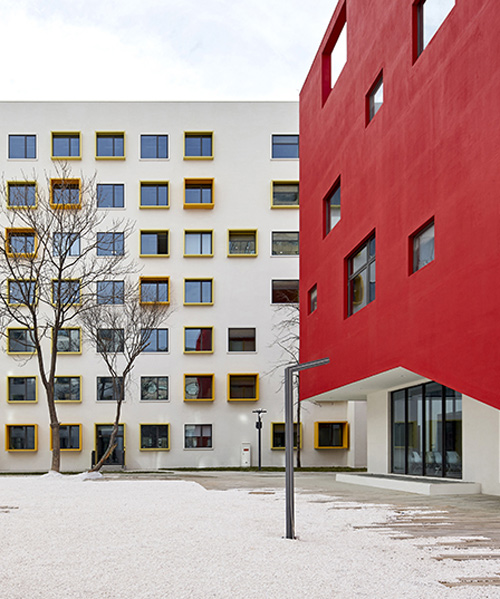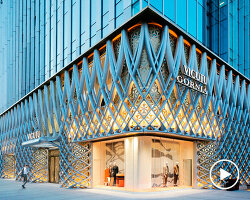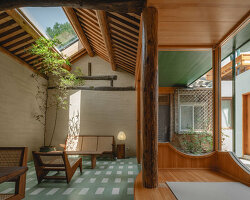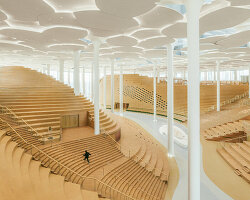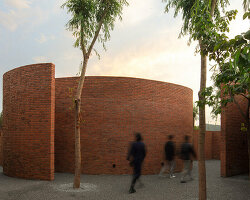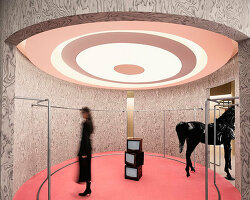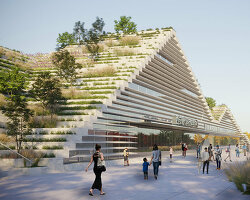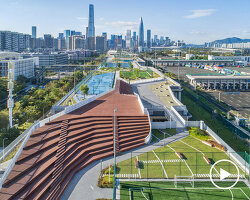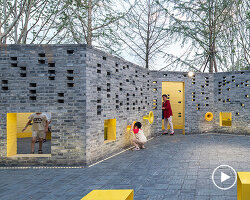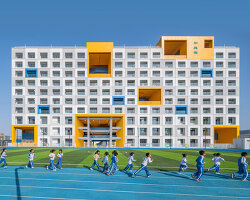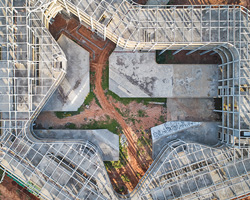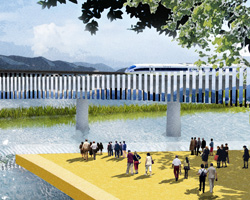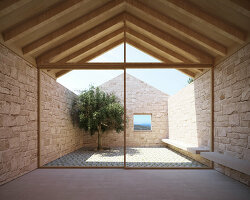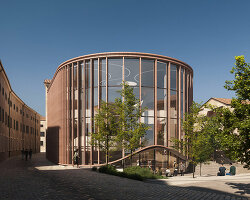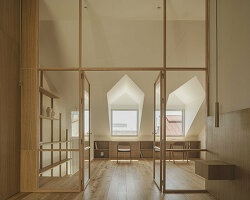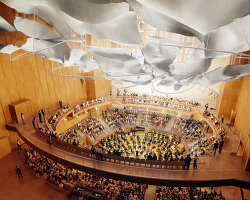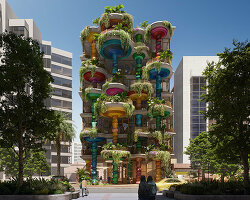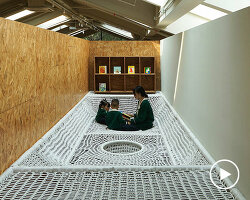crossboundaries has completed a high school in beijing, which is the latest iteration of peking university’s pedagogic model for china’s ‘future creators’. importantly, ‘chaoyang future school’ has no fixed chairs and tables, but instead features user-controlled, modular furniture. meanwhile, teacher-centric podiums and blackboards have been replaced with stimulating, collaborative work and learning spaces.
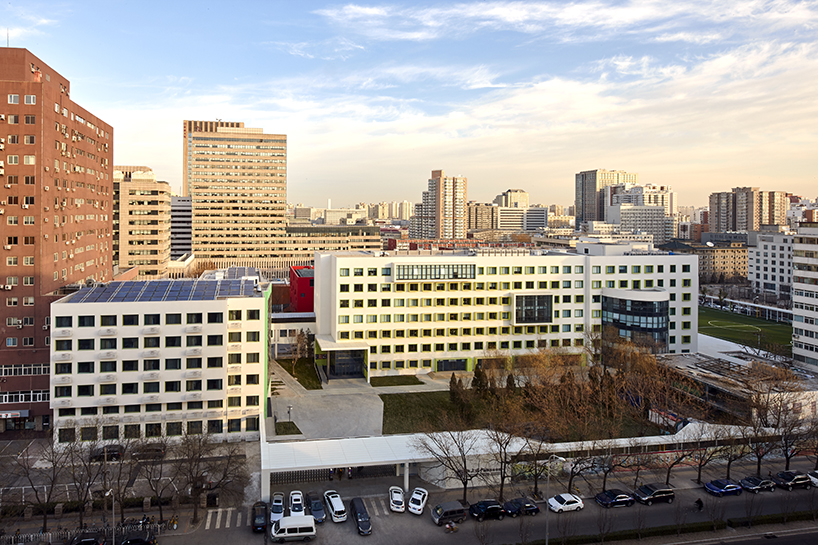
inspired by the flora of the original buildings, green hues wrap the face of the building
the renovation of the existing educational campus built in the 1980s completely reassesses the site’s landscape, façade, and interior. it uses color to negotiate from the urban scale to the human, and multifunctionality to assist both guided and passive learning. densely arranged, the existing campus mirrors its tight urban surroundings. inside its six buildings, faceless corridors were previously lined with rooms lacking identity or coherence.
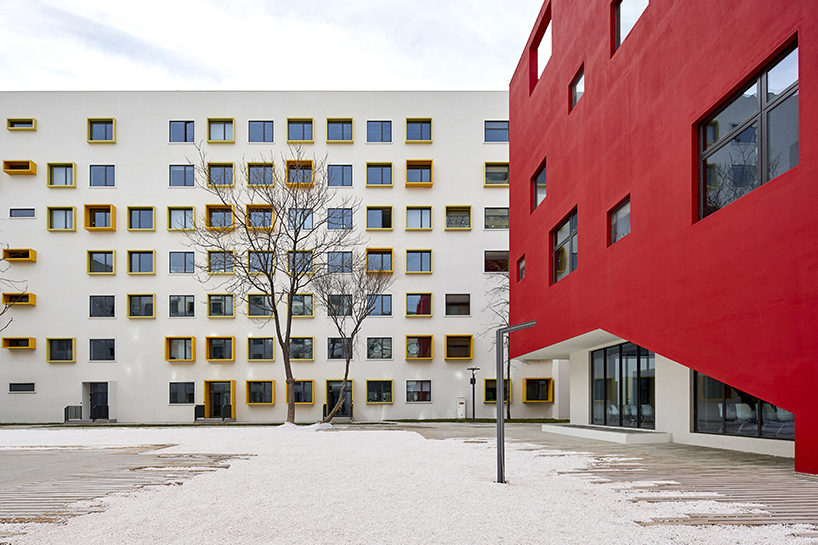
color provides identity and wayfinding throughout the campus
however, like the affiliated high school before it — the first collaboration of crossboundaries and peking university — the institution needed to explore the demands of the school to better serve the community. learning doesn’t just happen in the classroom but throughout the campus, exponentially raising the value of this tight urban area. formulating a crossover of the public and private, the school creates a village that delivers to individual needs, catering to both students and teachers where they will eat, sleep, play, study, learn, and explore.
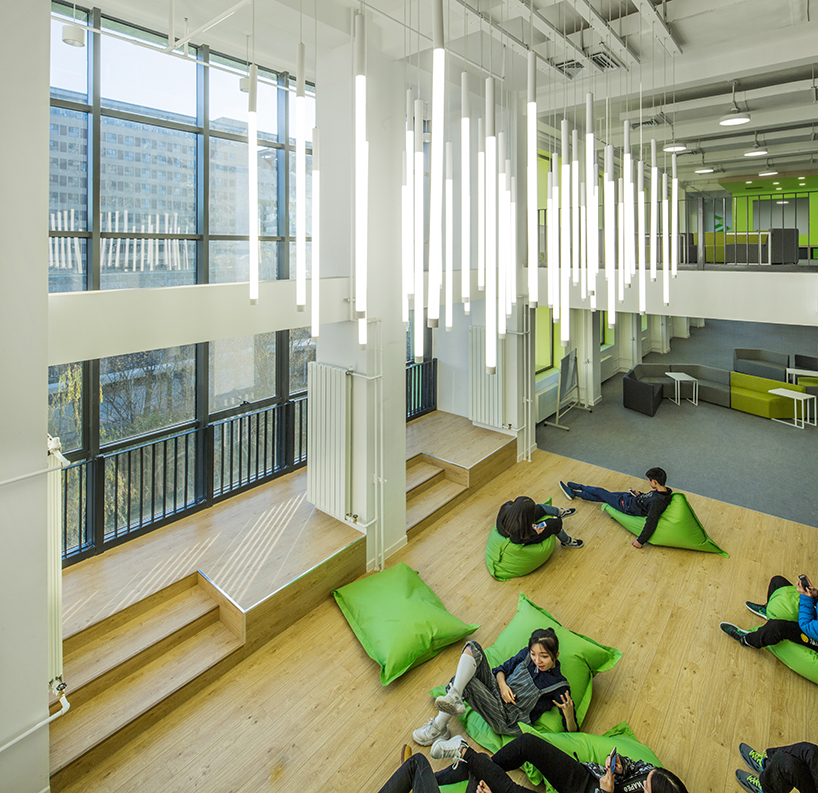
double-height activity spaces act as bridges to link related subjects on adjacent floors
since china’s economic opening in the 1970s, the nation’s development has been nothing short of a race. transforming its historically powerful workforce to engage with a global economy, the urgent call is for educational reform to deliver future generations to the stage as global actors. crossboundaries responded to this by exploring the translation of china’s strong cultural history into a modern paradigm that develops independent thinkers and autonomous citizens — creating spaces that encourage and support their necessary interactions.
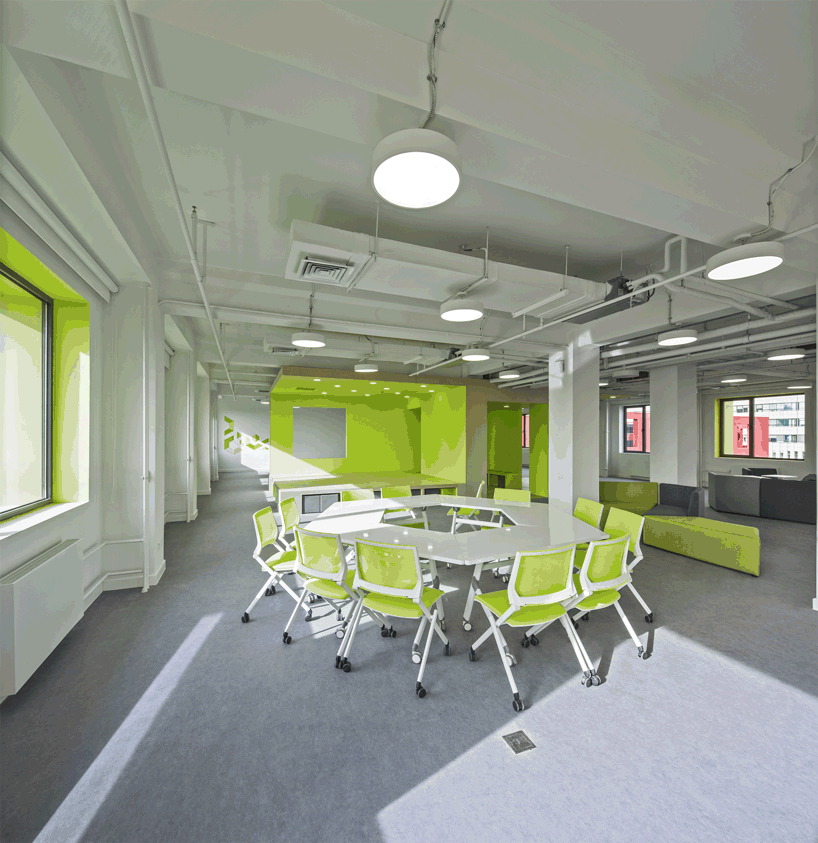
potential internal configurations
the future school campus and its educational methods are in need of an overhaul to meet these demands and be equipped for the future. while leveling the existing conditions of a pedagogy and an architecture is simpler than addressing them, the value added comes from navigating both. the nature of the built environment, education or any cultural institution, is inherited; by starting from and studying existing circumstance, the architects were able to translate its tested international approach to achieve a truly localized solution.
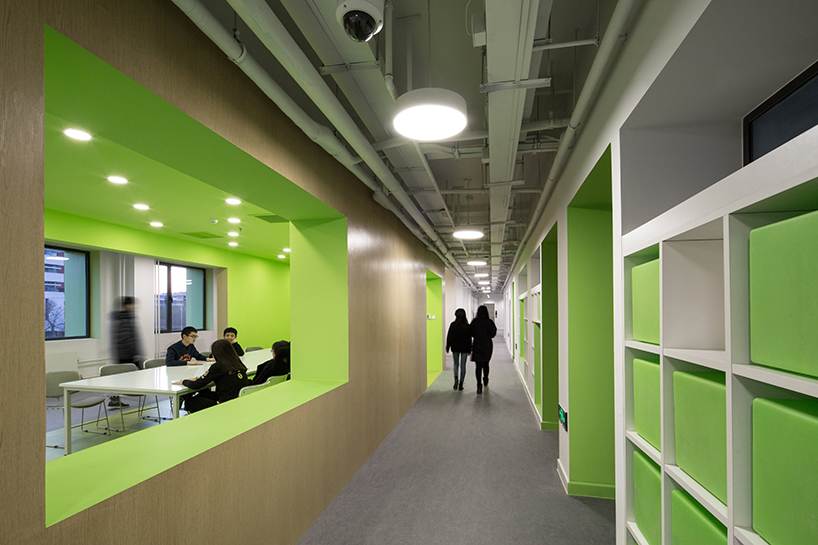
interior island interventions create playful, unconventional learning spaces
for the headmaster, the challenge of rethinking the nature of chinese education is to resist the historical precedent to reduce to tabula rasa a rich collective knowledge in the name of progress and instead leveraging its own history to develop new methods. crossboundaries’ objective works in parallel: to reuse and reimagine, adding to the ongoing lifespan of the existing buildings – to not only prolong their use but also restore their relevance and purpose.
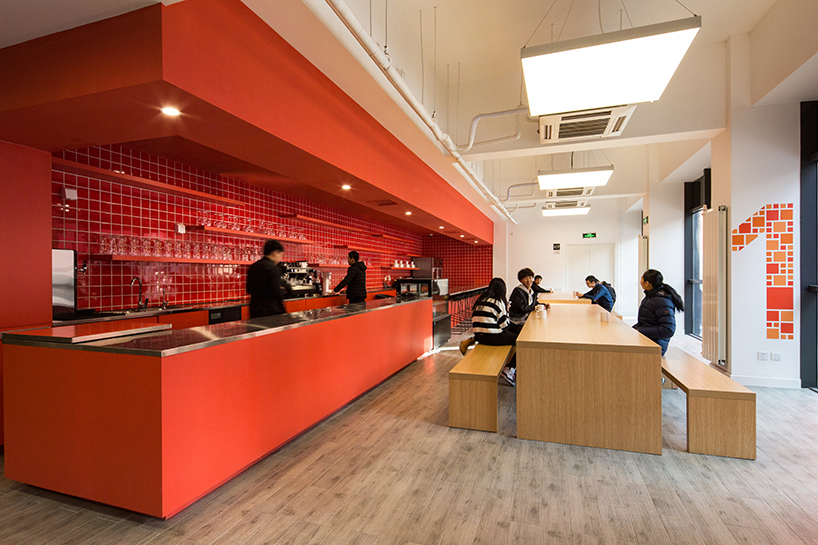
the multifunctional canteen and café are in use around the clock
crossboundaries implemented two key approaches in the chaoyang future school: ‘the conventional’, the general upgrade of the out of date and degraded facility to a modern campus, and ‘the unconventional’ which materialized as multifunctional interventions. all of which attributes flexibility, interconnectedness and identity, the essence of the school’s spirit.
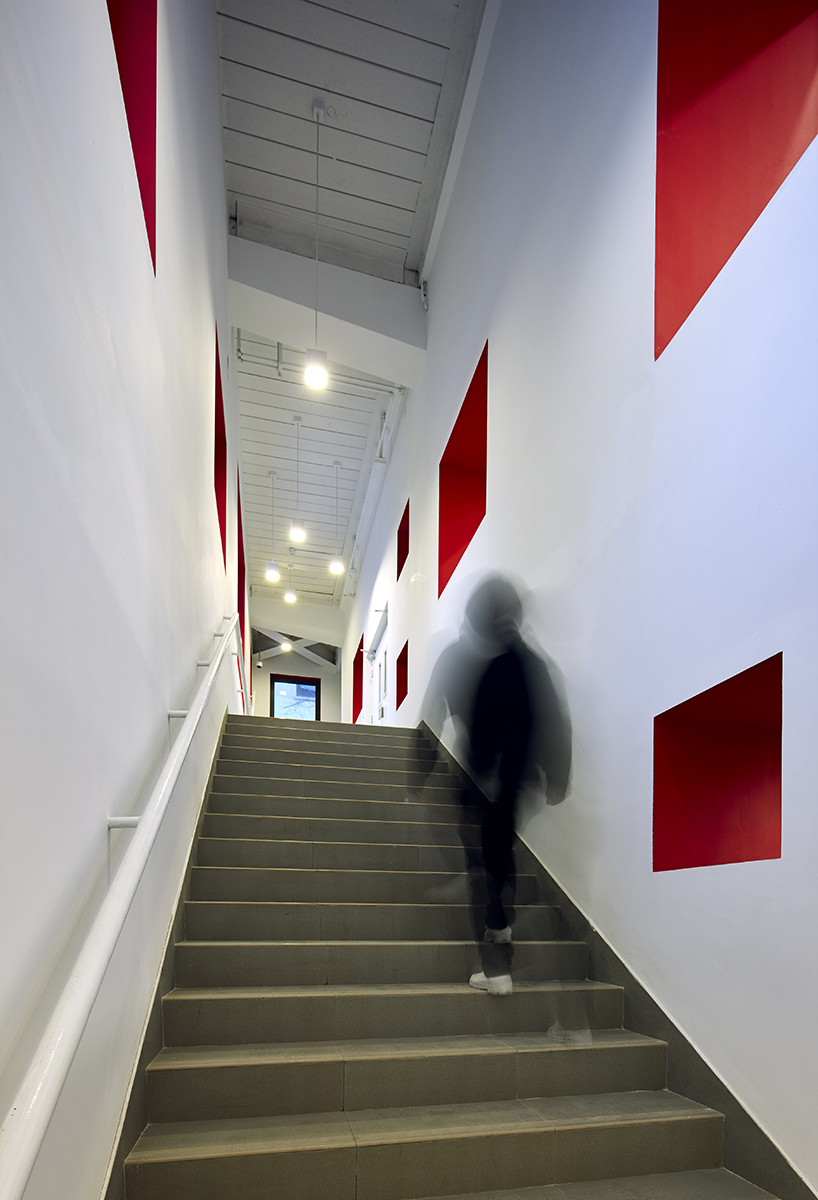
a new circulation scheme optimizes the use of the art center
inspired by the rich deciduous and evergreen vines that drenched the campus in its previous state, color sustains the liveliness of its outdoor spaces and brings it deep into the activity indoors. the clean white buildings are punctured with square openings, the rhythm preserved from the original structure. their ornament creates an interface between inside and out – both for each building individually and of the campus as a whole. window frames washed in green outline the public face of the campus, subtly fading yellow before warming to a deep red by the time they reach the campus center. the openings ebb and flow in size, swelling to mirror the spatial links behind and broadcast an abstraction of their activities to the community around it.
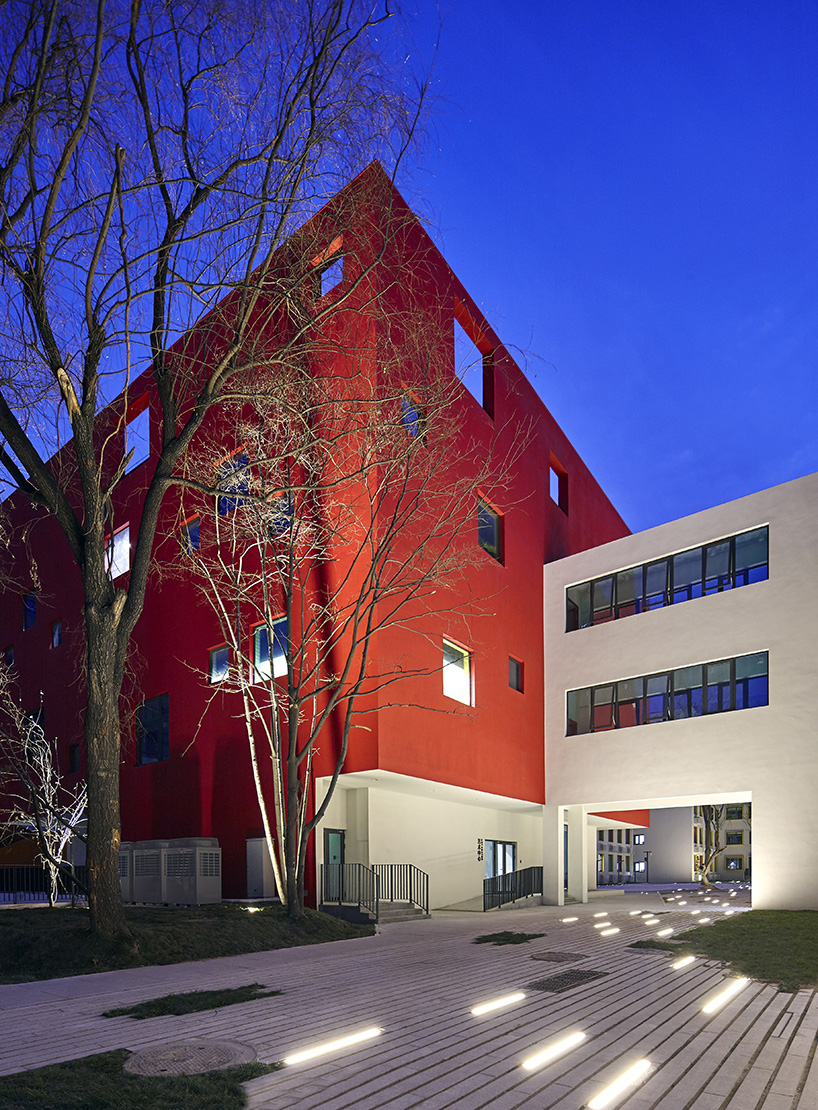
the art center is the heart of campus and has a new face with playful openings
with a new face and its circulation reconfigured, the scarlet red art center is located at the heart of the campus. meandering past it is the bright yellow running track, a path that ties together the existing with the lives of the new inhabitants. this path rejects former conventions of separating functions and activities, achieving a new efficiency by more than doubling the length of a track in its default location. by marrying sport and exercise with diverse activities and academic subjects, it emphasizes crossover and collaboration at every scale. even at the very edge of campus, a boundary fence becomes a space: a living interaction with the city beyond to serve both utility and play.
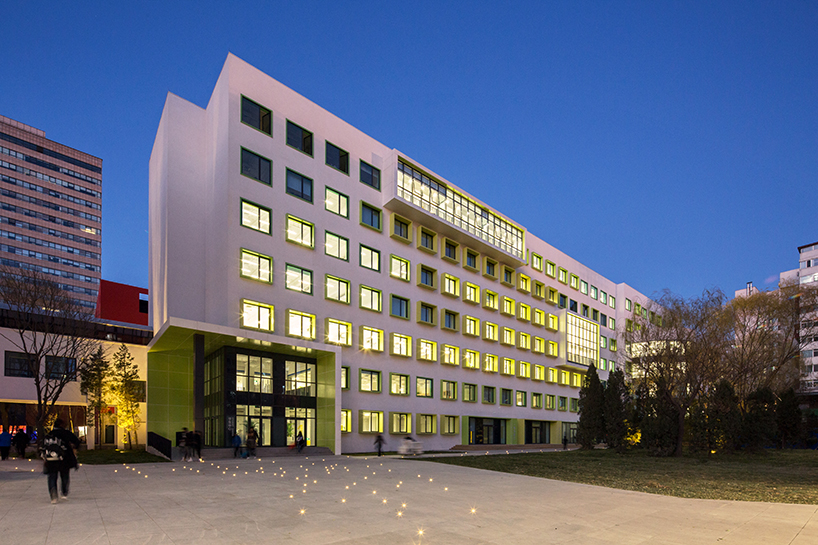
window projections vary in scale corresponding to the activities within
intervening with the institution the interior of each building is given freedom to breathe. previously confined spaces are opened up with new connections that allow for activities and subjects to crossover. architectural interventions open floors and walls to expand volumes and give way to new opportunities for creativity and inspiration. in the learning center, the existing classroom lined corridors at times become lined with glass and other times opened completely. new visual connections promote previously impossible user interactions. subject-specific ‘islands’ develop several functioning zones out of a singular open space on each floor. vertical ‘bridges’ connect two floors with multifunctional activity spaces between related subjects on adjacent floors.
video courtesy of crossboundaries
each intervention works to dissolve the spatial boundaries of the buildings’ rigid structure and uniformity, producing collaborative learning spaces bolstered by user-defined furniture. once the changeless box, the ‘classroom’ has outgrown the institutional system – the factory for educational conditioning yielding a standardized product. led by students and teachers together, it now offers them the ability to claim command of its space and interpret how best to use their time together.
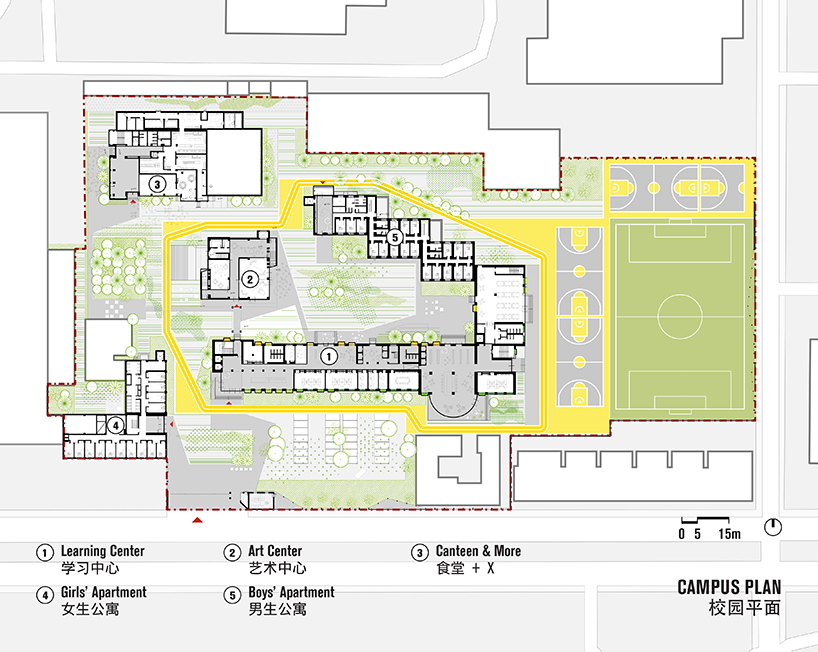
site plan
each campus building provides the user new opportunities and possibilities to interact, discuss, collaborate, create, and explore. spirit of a future school the collaborative renovation brings to life every element of the program. from each traditional learning space, across the landscape and administration, into the apartments and the canteen that delivers more than food, the design optimizes spaces and endorses a campus life that facilitates continuous learning around every corner.
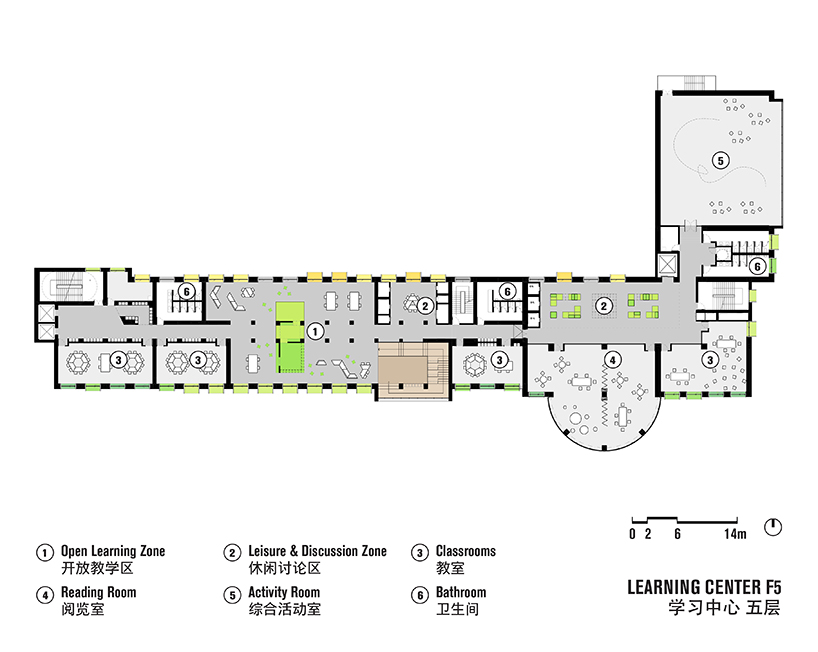
learning center / floor plan
each building holds its own unique identity while maintaining a common mission. each space employs color for identity and orientation, user-defined furniture and inspiring signage to encourage its creative use. chaoyang future school demonstrates not only the potential of reuse but also a reminder of the responsibility to work resourcefully — to engage the embedded values of the existing, whether they be social, economic, or environmental.
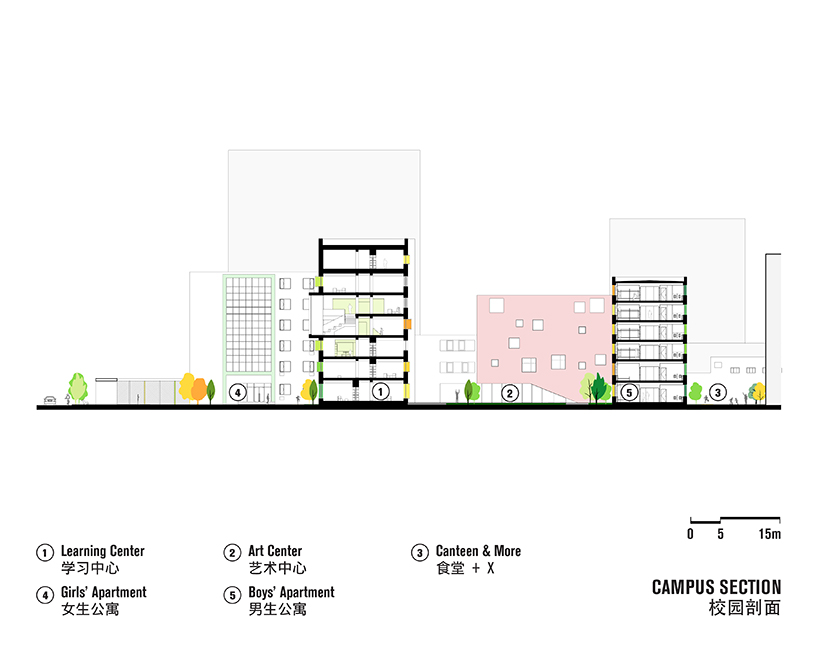
campus section
the spirit of flexibility, interconnectedness and identity generates more than new uses, functions and values – it represents an evolution within the lifespan of a building and the resilience to adapt over time. now open, future school has begun a new journey with a renewed relevance: to guide a community, shape and inspire new lives and leaders, and stand the test of time.
project info:
location: beijing, china
client: affiliated high school of peking university
size: 25,916 sqm
campus area: 25,916 sqm
architecture footprint: 5,215 sqm
total architecture area: 26,622 sqm
FAR: 1.06 student no: 1600 ppl
program: learning center: 13,842 sqm
art center: 2,243 sqm
canteen & more: 1,578 sqm
apartments: 8,959 sqm, 820 ppl
design period (including feasibility study): june 2015 – july 2016
completed: december 2017
construction period: january 2017 –december 2017
LDI: beijing institute of architectural design (BIAD)
partners in charge: binke lenhardt, dong hao
design team: gao yang, alan chou, natalie bennett, andra ciocoiu, irene solà, hao hong yi, cynthia cui, tracey loontjens, aniruddha mukherjee, libny pacheco, sidonie kade, tan kebin, fang ruo, chloris yu, silvia campi, wang xudong.
photography: wang ziling, yang chao ying
designboom has received this project from our ‘DIY submissions‘ feature, where we welcome our readers to submit their own work for publication. see more project submissions from our readers here.
edited by: philip stevens | designboom
ARCHITECTURE IN BEIJING (188)
ARCHITECTURE IN CHINA (1750)
CROSSBOUNDARIES (15)
RENOVATION ARCHITECTURE AND DESIGN (726)
SCHOOL ARCHITECTURE AND DESIGN (686)
PRODUCT LIBRARY
a diverse digital database that acts as a valuable guide in gaining insight and information about a product directly from the manufacturer, and serves as a rich reference point in developing a project or scheme.
